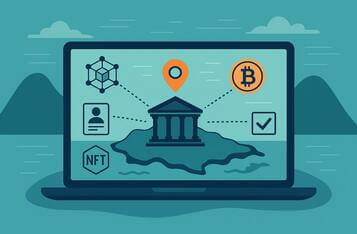Bitcoin will Reach $70,000 Soon if the Federal Reserve Cuts Rates
Arthur Hayes, BitMEX's ex-CEO, recently Suggested that a rate cut by the Federal Reserve could propel Bitcoin to the $70,000 mark, simultaneously rejuvenating the US banking sector. This assertion adds another layer to the ongoing debate among investors about the impending direction of the financial markets.
Historical trends underscore the symbiotic relationship between the Federal Reserve's monetary decisions and Bitcoin's trajectory. Notably, during the pandemic's fiscal response, Bitcoin's ascent outpaced the Fed's balance sheet expansion by an impressive 129%. Such data points underscore the market's keen response to the Fed's moves, particularly under Chairperson Powell's tenure.
Yet, the plot thickened post-March 2022. Bucking the popular sentiment that anticipated a pause in rate hikes, the Federal Reserve surprised markets by implementing three additional hikes. This development spurred a reevaluation among market participants and analysts alike.
A salient query emerged during the Korea Blockchain Week conference: Can Bitcoin's valuation sustain its upward momentum if central banks, including the Federal Reserve, persist with their hawkish stance? This question gains prominence against a backdrop where the US skirts a recession, inflationary pressures persist, and financial stability remains intact. If these variables hold, it's conceivable that central banks might maintain their current trajectory.
Drawing from historical parallels, post-WW2 Asian economies, which thrived on exports, leveraged financial repression—a scenario where nominal GDP growth eclipses bond yields. This strategy facilitated affordable capital access for industrial entities, fostering rapid modernization and ensuring job stability.
In this discourse, the 'Real Yield'—derived by offsetting the Government Bond Yield with Nominal GDP Growth—emerges as pivotal. An analysis using the 2-year US Treasury yield as a proxy indicates that real rates, despite aggressive rate hikes by the Fed, barely remain in the positive territory. A shift to longer tenors, like the 10-year or 30-year yields, reveals persistently negative real rates, dampening the allure of long-term bonds.
Reflecting on the fiscal windfall during the 2020-2021 bull run, the affluent segment significantly bolstered tax coffers. However, 2022 ushered in a paradigm shift with the Fed's rate hike decision, exerting downward pressure on financial markets. An illustrative chart, benchmarked at 100, delineates the performance trajectory of key indices, including the S&P 500 and Nasdaq 100. This pivot resulted in dwindling capital gains tax revenues, with 2021 data from the US Congressional Budget Office indicating that realized capital gains constituted nearly 9% of the GDP.
Current trends intimate a surge in government expenditure, especially in sectors catering to demographic shifts and a multipolar global order. With escalating expenses and tapering revenues, fiscal deficits are poised to widen. Projections suggest that by the close of the year, the US Treasury will be compelled to introduce bonds worth an additional $1.85 trillion to address legacy debt and the fiscal deficit. As of the second quarter's culmination, the annualized interest outlay by the US Treasury hovers around $1 trillion.
Decoding this dynamic reveals a cyclical pattern: The Federal Reserve's inflation-containment strategy, manifested through rate hikes, necessitates augmented bond issuance by the US Treasury at steeper rates. This dynamic inadvertently amplifies nominal GDP growth, driven by affluent segments channeling their interest earnings into service consumption.
Contrary to the prevailing narrative that associates rate hikes with adverse implications for volatile assets like Bitcoin, the cryptocurrency has registered a commendable 29% appreciation since March 10. This resilience suggests that sustained rate hikes by the Fed could plunge real rates further into negative territory.
Market dynamics indicate a pronounced focus on the Federal Reserve's nominal rate, overshadowing the real rate juxtaposed against the US's robust nominal GDP growth. This skewed perception might elucidate Bitcoin's inability to breach the anticipated $70,000 threshold. As the inefficacy of bonds, even with nominal rates at 5.5%, becomes palpable, investors might recalibrate their portfolios in favor of tangible assets like Bitcoin and AI-centric equities.
In summation, while prevailing sentiment leans towards a potential rate cut and a revival of quantitative easing, the robustness of digital currencies, epitomized by Bitcoin, in navigating rate hikes is evident. This evolving dynamic between Bitcoin and Federal Reserve policies, especially in a high debt-to-GDP milieu, suggests a potential recalibration of conventional economic paradigms.
Disclaimer & Copyright Notice: The content of this article is for informational purposes only and is not intended as financial advice. Always consult with a professional before making any financial decisions. This material is the exclusive property of Blockchain.News. Unauthorized use, duplication, or distribution without express permission is prohibited. Proper credit and direction to the original content are required for any permitted use.
Image source: Shutterstock









